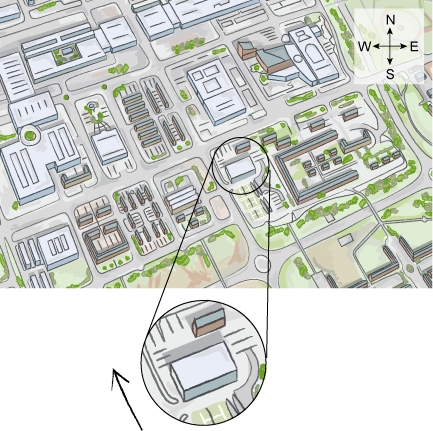4 What is your orientation?
A critical determinant for how much heat a building needs is its orientation in relation to the Sun. A building that faces the Sun without any obstruction – a south-facing house with an unobstructed view of the sea, for example – will be much warmer than one that doesn’t. Remember, however, that the position of the Sun changes throughout the day, so a house that faces the Sun in the morning might not necessarily face the Sun in the evening.
Usually, though, the orientation is determined by many other factors: the need to fit a number of buildings on a restricted site, the need to link with roads and other existing networks, the need to take into account the surrounding landscape and other buildings. For example, if houses are built in terraces on either side of a road, one side will always get more Sun than the other side.
Activity 6 Sunlight and orientation
Take a good look at the picture below, which shows a bird’s eye view of streets and buildings. The image is oriented so that the top points north, the right-hand side points east, the bottom points south, and the left-hand side points west. Which way do you think the Sun is shining? Where do you think the sunniest house in the picture is, and where do you think the least sunny house is?
Discussion
The sequences of pictures below answer the questions above.
The best way to determine which direction the Sun is shining in is to look at shadows. If you look carefully at the first image, you can see shadows next to the north-west facing sides of the buildings, and that reveals the direction of the Sun as being from the south-east. Another telling shadow is cast by the large building next to the tennis courts, circled and enlarged in the first image below.
The second image shows the buildings that are likely to be the sunniest. These are the buildings which face towards the south, and which don’t have too many obstructions around them. The big building surrounded by the tennis courts and other green space is likely to have the most Sun of all.
The third image shows the buildings that are likely to be least sunny. These are east and west facing with obstructions all around them. They will get some sunlight through the day, but it will be far less than the sunniest houses.




